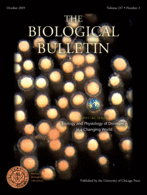Sleeping in and waking up
Sometimes “sleeping in” is a good idea

Cover of the special issue featuring a picture of dormant Hydra embryos
We all know the value of a good nap. The world keeps spinning, but for a few minutes or hours, you can isolate yourself from all your worries and let your body recharge. Ever wish you could bury your head under the blankets for longer? Plenty of animals have figured out how to move beyond an afternoon nap and enter into a dormant state that can last months, years or even decades. Rather than a way to procrastinate or recover from a late night, dormancy is a vital survival strategy for many species. Dormancy allows animals to survive through rough times: when the water is too hot or too cold, when a pond dried up, when food is scarce, and when predators are many. Yeah, that would make anyone want to go back to bed. The key is to know when dormancy is the best bet for survival, and when it’s time to “wake up” and resume development. How do animals make these decisions, and how will strategies change with climate change and other perturbations?
I’ve recently* had the opportunity to guest edit a Special Issue of The Biological Bulletin entitled “Ecology and Physiology of Dormancy in a Changing World” The invited papers in the issue include both reviews and primary research papers and include diverse organisms (rotifers, copepods, cnidarians) and life stages (embryonic and post-embryonic). The roles of microRNAs and microbial associations in dormancy are featured as two cross-cutting topics. I encourage you to take a look. There are still many unanswered questions, but molecular methods have provided new insight into many aspects of dormancy regulation.
*it came out today, yay!!
And sometimes you need to wake up and jump at an opportunity!
My favorite part of editing the journal was a fortuitous conversation in our local coffee shop. I had just agreed to edit the special issue and was nervous about finding great content. Rob Steele was in town from UC Irvine and wanted to borrow some sampling equipment. Rob is an expert in Hydra development (check out his lab wiki). I hadn’t met him before, but when he came by the lab, he was very gracious and seemed like he was doing interesting work. I was curious and asked Rob if he had time to tell me about some of his current research over a cup of coffee. His lab is doing all kinds of interesting things, but by chance the conversation meandered toward an interesting observation of Hydra living in a vernal pool. The vernal pools dry out each year, so the Hydra must either be introduced each season (probably as dormant embryos sticking onto more mobile carriers, such as bird feed) or must survive through the dry season (again probably as dormant embryos). I had never heard of Hydra living in this way and asked if it had been published anywhere. Rob said that it hadn’t and I jumped at the opportunity to recruit him for the special issue! That chance encounter gave me confidence that many interesting stories about animal dormancy were waiting to be told. It has been fun to uncover them.